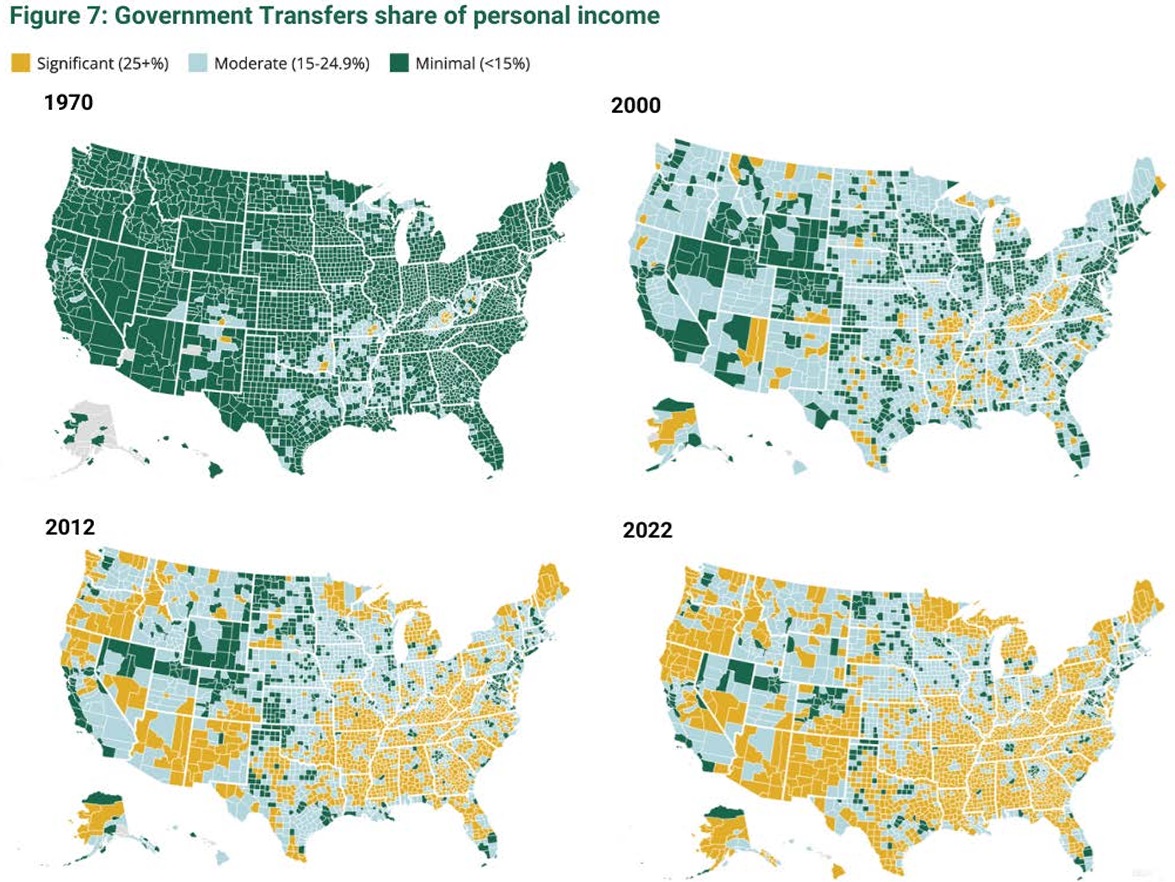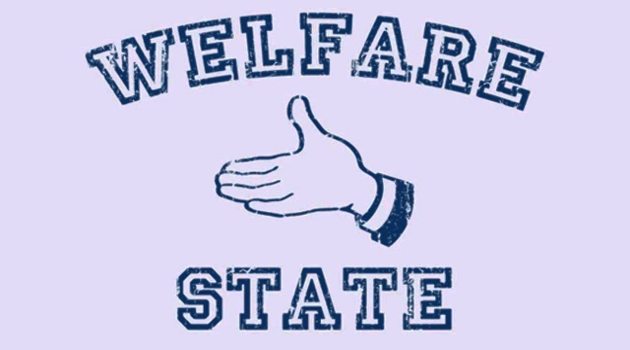One of Margaret Thatcher’s famous observations was that socialist governments fail because they inevitably run out of other people’s money.
If I’m in a pedantic mood, I will nit-pick that statement by pointing out that she should have said redistributionist governments.
For today’s column, though, let’s not get bogged down in a debate over how socialism is defined.
Instead, I want to share a very depressing set of maps from a report by the Economic Innovation Group. As you can see, the United States went from being a mostly green nation in 1970 to being a mostly tan nation in 2022.
And since green signifies self-reliance (government transfers representing less than 15 percent of personal income) and tan suggests dependency (transfers equaling more than 25 percent of personal income), this is a very worrisome trend.

These maps are depressing because I worry about the implications of the 17th Theorem of Government.
I don’t want societal capital being eroded as more and more people think it’s okay to be wards of the state.
And when you combine that with demographic change (more elderly recipients of government goodies and fewer young people to pay the bills), that is a recipe for an ever-expanding burden of government. In America, Japan, and Europe.
But my first concern is the United States. Sadly, there is little reason for short-run hope given the statist inclinations of both Trump and Harris.

